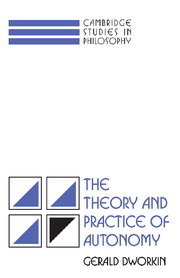Book contents
- Frontmatter
- Contents
- Preface
- Acknowledgments
- PART I THEORY
- PART II PRACTICE
- 6 Consent, representation, and proxy consent
- 7 Autonomy and informed consent
- 8 Paternalism: some second thoughts
- 9 The serpent beguiled me and I did eat: entrapment and the creation of crime
- 10 Behavior control and design
- Epilogue
- Bibliography
- Index
9 - The serpent beguiled me and I did eat: entrapment and the creation of crime
Published online by Cambridge University Press: 05 June 2012
- Frontmatter
- Contents
- Preface
- Acknowledgments
- PART I THEORY
- PART II PRACTICE
- 6 Consent, representation, and proxy consent
- 7 Autonomy and informed consent
- 8 Paternalism: some second thoughts
- 9 The serpent beguiled me and I did eat: entrapment and the creation of crime
- 10 Behavior control and design
- Epilogue
- Bibliography
- Index
Summary
In the past few years a number of criminal prosecutions have brought to public attention the issue of entrapment: Abscam, the DeLorean cocaine trial, Operation Greylord, various sting fencing operations. The investigative techniques used in, say, Abscam, although highly elaborate, expensive, and ingenious are only one example of the range of investigative techniques with which I shall be concerned in this essay. What these techniques have in common is the use of deception to produce the performance of a criminal act under circumstances in which it can be observed by law enforcement officials. I shall use the term “pro-active enforcement” to cover such techniques and the question I shall be discussing is under what circumstances, if any, is the use of such measures legitimate.
Let me begin by saying something more about the nature of proactive law enforcement and also by giving a fairly extensive sample of the use of such techniques. The sample will not only make clearer the nature of such operations but also provide a range of cases for testing judgments about the acceptability of such techniques.
Traditionally, law enforcement in our society has left most of the burden of reporting criminal offenses to private citizens. It is left to individuals, usually victims, to come forward with a complaint of criminal action and to provide much of the evidence in identifying and prosecuting the criminal. Government's role has been limited to various patrol activities and to reaction to complaint.
- Type
- Chapter
- Information
- The Theory and Practice of Autonomy , pp. 130 - 149Publisher: Cambridge University PressPrint publication year: 1988

